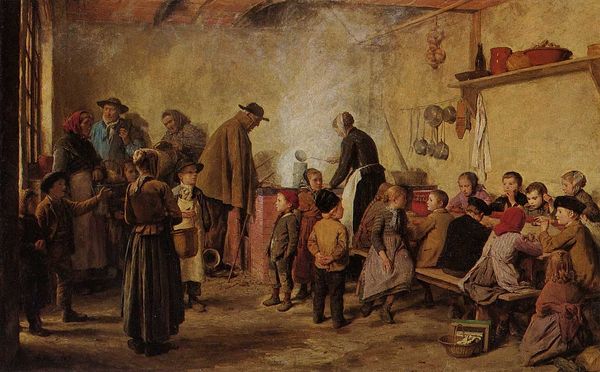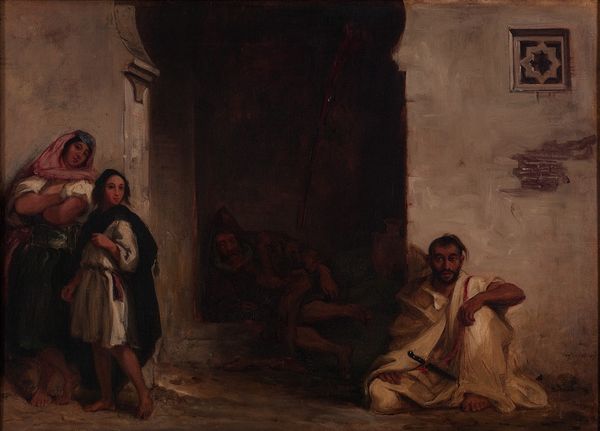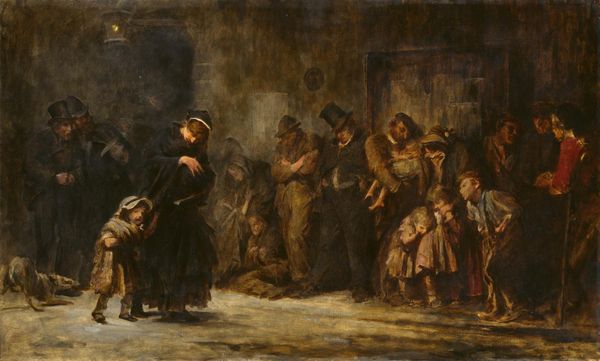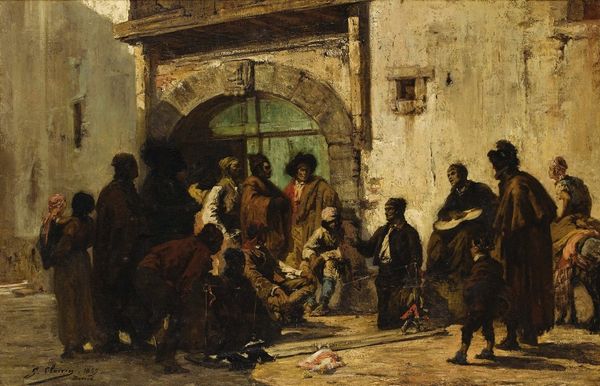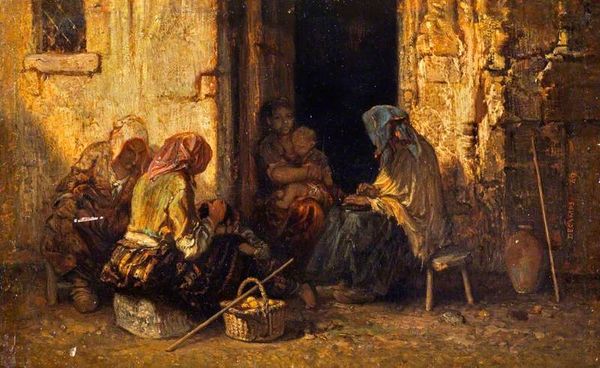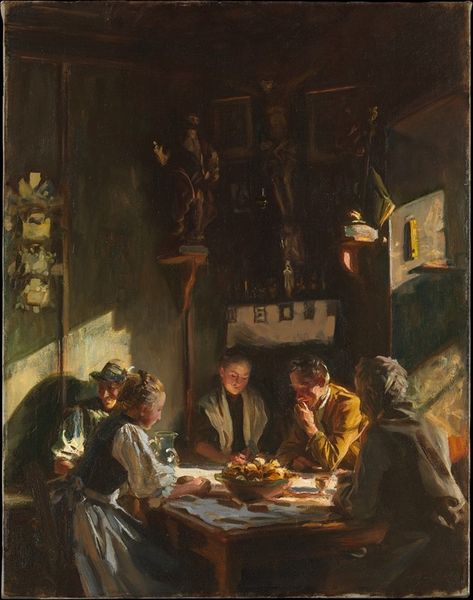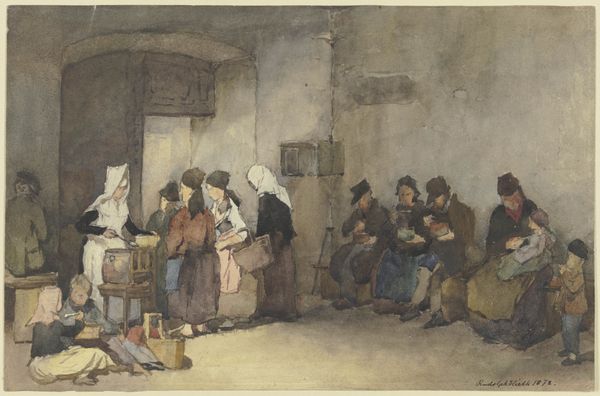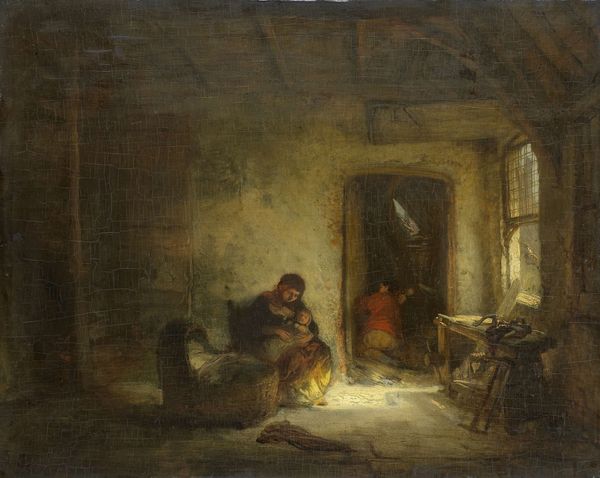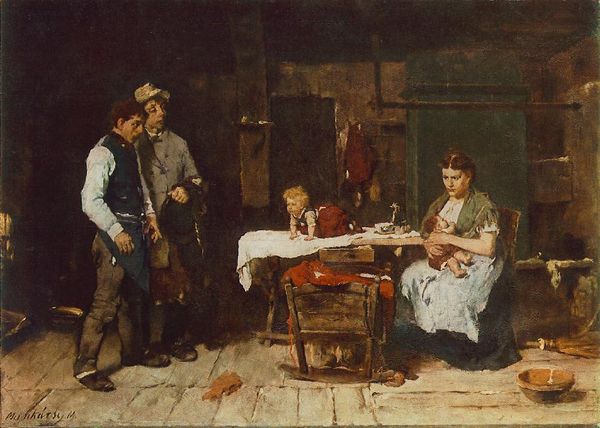
Copyright: Public Domain: Artvee
Curator: Winslow Homer painted "Sunday Morning in Virginia" in 1877. It offers a glimpse into the lives of formerly enslaved people during Reconstruction. Editor: There’s a beautiful quietude to this piece. The rough brushstrokes and earthen palette contribute to a sense of profound stillness and solemn reflection. What medium did Homer employ here? Curator: He used oil paint. Look at the way the figures are arranged: the children gathered around the book, and then the elder woman with a walking stick, slightly set apart yet centrally positioned. To me, that's not just composition—it speaks volumes. Editor: Indeed. Considering the socio-political context of the time, that separation resonates deeply. I’m also intrigued by the building’s structure in the scene; observe the roughness of the brick wall behind the young students. Did this setting symbolize something to the community? It looks rather humble, as if repurposed. Curator: It might suggest the modest means available for education during this era, reflecting on their struggle for empowerment. I believe this space represents sanctuary and self-determination, a site where knowledge and spirituality converge. The open book itself holds so much symbolism; it's a representation of hope, enlightenment, and resistance against imposed ignorance. Editor: And I imagine this image allowed Homer, who started as an illustrator, to test painting as both an observational practice and a marketable skill. The way he balances attention to the surfaces of things – the fabric, the wood, even skin tone – and his broader political investments makes it clear this work wasn’t purely objective nor overtly allegorical. Curator: It strikes me as so deliberately intimate. Homer clearly invested significant emotional weight here, seeking to honor and represent this community respectfully at a time when they were struggling to define themselves. Editor: Precisely. Seeing the labor of the paint and considering his social awareness prompts thoughts about art's capacity to record more than just images; it captures material struggles and embodied aspirations. Curator: Well, reflecting on the work, I’m moved to think about the legacy of resilience represented here, the continuing journey towards self-definition and societal transformation that began during Reconstruction. Editor: Yes, and the physical marks left by the artist prompt questions about the social agency embedded in these tools, techniques, and the hands that manipulated them. Thank you.
Comments
No comments
Be the first to comment and join the conversation on the ultimate creative platform.

